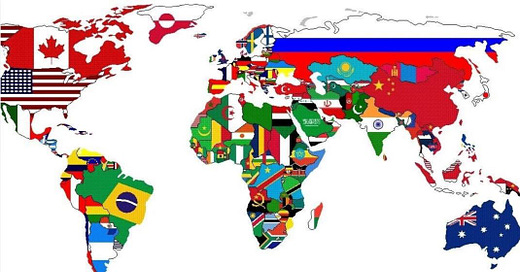EM Fund Stock Picks & Country Commentaries (May 16, 2023)
Frontier market fund stock picks coming from both US and international fund managers are in focus this week plus valuation-driven investing vs. value investing and how to determine EM bank strength.
Frontier market fund stock picks coming from both US based and international fund managers are in focus this week, with some highlights being:
A hospital chain stock that is considered to be a market leader where it’s based in SE Asia, but it only owns less than 3% of the private hospitals in the country - meaning there is room for growth.
A packaged-food maker who’s also involved in commodities that has delivered significant earnings growth thanks in part to a steep rise in sugar prices.
A manufacturer of raw inputs or components for restaurants and FMCGs who (along with it’s customers) was hit by COVID and supply chain disruptions. However, the worst is over for the Company and a new factory will soon start commercial operations that will increase exports and free cashflow.
A banking group (that is a regional player in Southeast Europe) and a generic prescription and non-prescription pharmaceutical stock pick from a very small and often overlooked Eastern European country (where my Grandmother’s parents were from…). What’s interesting about the latter stock is how they not only export to 70+ countries (including Russia as apparently pharma products are still exempt from sanctions), roughly 80% of investors are local retail (40%) and institutional investors.
A number of African frontier market stocks. Some could be poised for share rebounds once local currency rates stabilize and/or currency controls are eased.
Two Latin American copper mining stocks who’s shares have so far had a good year.
One Fund latest report pointed out how banking is the largest industry in the MSCI FEM Index at about 35% - significantly higher than the 15% weighting in the EM Index and 5% in the DM Index. The report then went into considerable detail (which is briefly summarized at the end of this post) about how they determine the financial strength of banks using measures that can be broadly classified into five groups or key areas.
Another fund talked about (and I might as talk about it in the non-paywalled section as it was an Institutional fund who’s documentation cannot be directly quoted) how many investors confuse valuation-driven investing with value investing.
Value investors search for stocks trading on low earnings multiples, high dividend yields, and low price to book valuations. However, strictly following this value approach will cause these investors to miss stock picking opportunities with higher quality and better growth as these stocks usually trade on higher P/Es and have lower dividend yields.
In other words, investors need to first consider the growth outlook for a stock and then determine whether the business is attractively valued. This will sometimes mean buying a stock trading on multiples that could, at first glance, appear to be expensive.
On the other hand, investors sometimes need to avoid stocks trading with low multiples if the quality of the business is low or if there are concerns about the ability for the business to sustain earnings or growth rates. That’s one reason why I spend some time writing (or using screenshots) about what a stock actually does and now I include (as much as possible) a forward P/E and dividend yield with a link to the source.
Note that Yahoo! Finance’s Statistics section typically gives (but not always for emerging market stocks) the following valuation measures:
Following the above approach will sometimes mean owning stocks with both high and low P/E multiples and dividend yields. As long the the underlying business is of high quality and producing sustainable growth, high or low multiples will not matter much for investors with a long term horizon.
Finally, frontier market funds (especially those investing in Africa) tend to face (and discuss) hurdles involving currency devaluations and/or currency controls. Eygpt, Ghana, Nigeria, and Zambia are among these countries facing such challenges right now. Thus, African stocks involved in exporting, natural resources, or have remittance inflows are potentially less risky to own until currencies stabilize.
Disclaimer. The information and views contained on this website and newsletter is provided for informational purposes only and does not constitute investment advice and/or a recommendation. Your use of any content is entirely at your own risk and it is your sole responsibility to evaluate the accuracy, completeness and usefulness of the content. Seek a duly licensed professional for any investment advice. I may have positions in the investments covered. This is not a recommendation to buy or sell any investment mentioned.
For a further disclaimer and an explanation of the reasoning behind these posts: DISCLAIMER: EM Fund Stock Picks & Country Commentaries Posts.
Note: Where possible, company links are to their respective investor relations or corporate pages. Region and country links are to our ADR or ETF pages where there are further country specific resources (e.g. links to local stock markets and media websites). Please report any bad links in the comments section.




